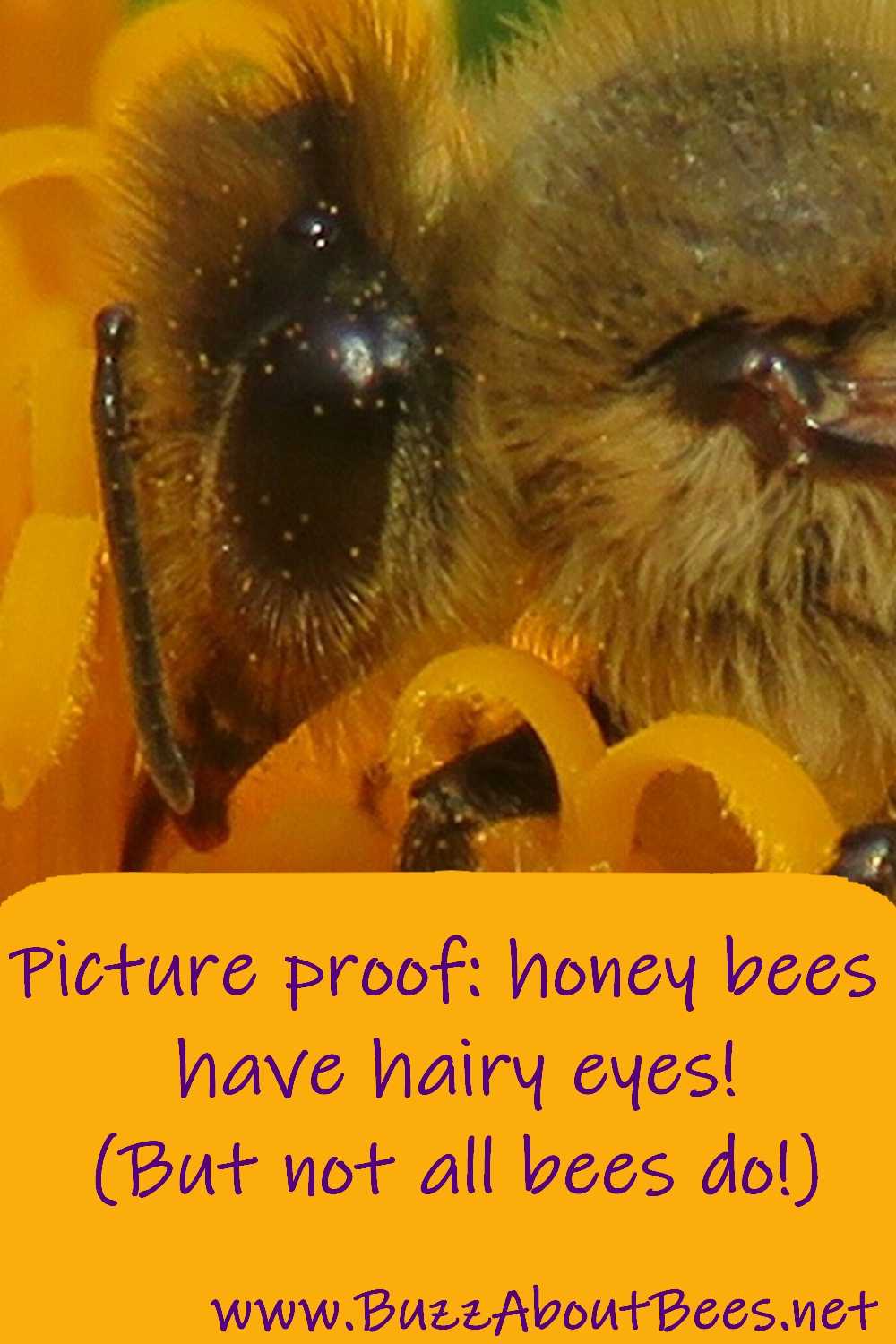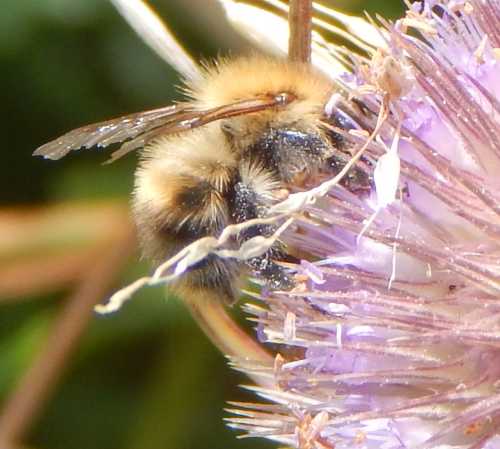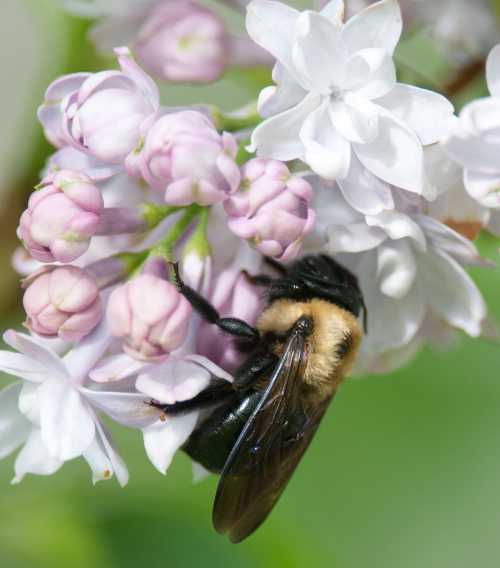Honey Bees Have Hairy Eyes
The bodies of honey bees are completely covered in hair – even the eyes! So:
- why do honey bees have hairy eyes, and
- how does this interesting feature assist them?
Do All Bees Have Hairy Eyes?
No, not all bee species have hairy eyes, but honey bees certainly do. Another group of bees that are known to have hairy eyes are the sharp-tail bees belonging to the Megachilidae bee family.
The importance of hairs on the eyes of honey bees
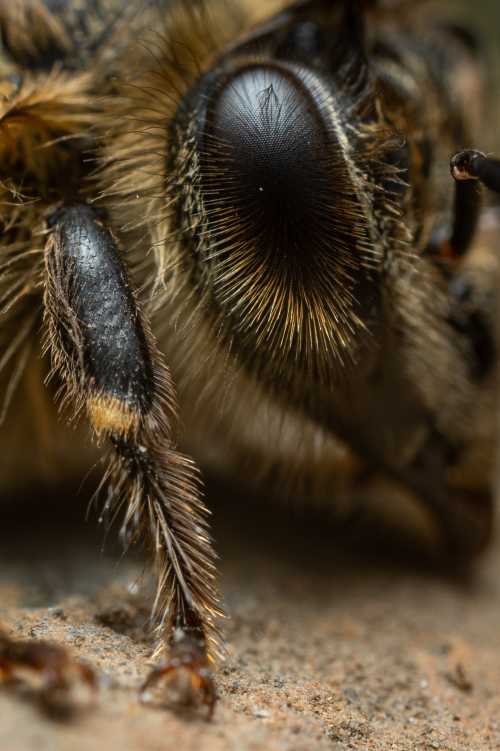 Fabulous image showing the hair on the eyes of the bees - it's also a great view of the hair on the legs and rest of the face! Thanks to Isaias Sanchez!
Fabulous image showing the hair on the eyes of the bees - it's also a great view of the hair on the legs and rest of the face! Thanks to Isaias Sanchez!At first glance, the hairs on the eyes of honey bees are barely visible, but professional photographers and scientists have provided proof the hairs and there, and thanks to some excellent photographs sent to me, courtesy of Isaias Sanchez (USA), we can get a good look at the hairy eyes of the honey bee (thank you Isaias!).
These fabulous images show us that the eye is not only surrounded by hairs, the hairs can also be seen on the actual surface of the eye itself.
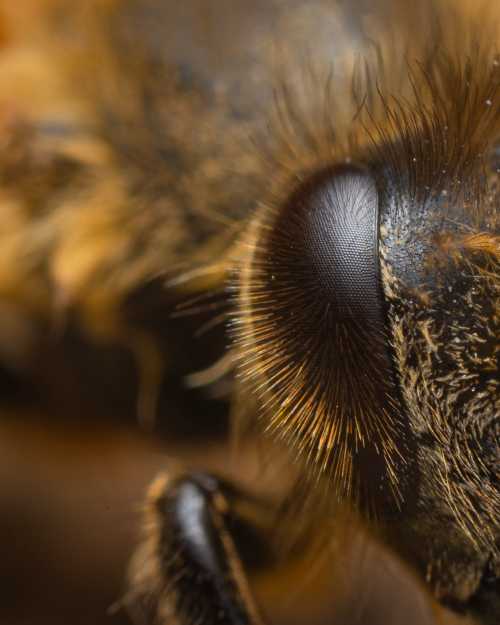 Photograph, with thanks to Isaias Sanchez
Photograph, with thanks to Isaias SanchezWhy do honey bees have hairy eyes?
The legs, head and bodies of honey bees (like all flower-foraging insects) get covered in
millions of grains of pollen when they are visiting flowers.
This is a deliberate process and part of their method of collecting pollen. The hair on the eyes of the honey bee is important because the bees’ eyes become covered with pollen too. Having hairy eyes prevents the pollen becoming stuck directly to the eye surface.
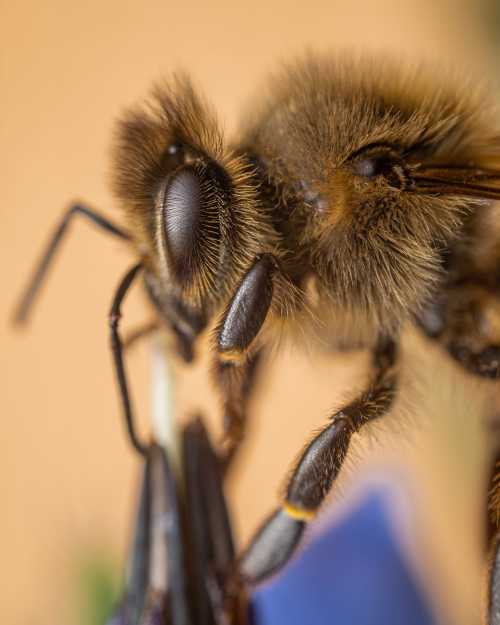 Photograph, with thanks to Isaias Sanchez
Photograph, with thanks to Isaias SanchezHowever, if the pollen was not removed from the eye hairs, then it would become difficult to fly and to navigate. Therefore, honey bees must remove the pollen from their bodies - and especially their eyes, by transferring the pollen to corbiculae (pollen baskets) on their hind legs for transport back to the hive.
How
do honey bees clean the pollen away from their eyes?
Honey bees use their legs to clean themselves.
A study (“Honey bee hairs and pollenkitt are essential for pollen capture and removal”, by Amador et al, published in 20171) used specialised filming techniques (high speed videography) to show honey bees grooming themselves and transferring pollen from the eye hairs to the hind legs.
They also demonstrated the importance of a sticky fluid on pollen grains known as 'pollenkitt'.
Pollenkitt has an odor that attracts pollinating insects, whilst possibly helping the pollen grains to adhere to the insect’s body.
What did they find?
- Firstly, they found that honey bees seem to have a
pre-programmed method of cleaning, which doesn’t vary from bee to bee, and is
not dependent on how dirty the bees are, nor on how much pollen is covering
them. The bees always swipe their eyes
in the same way, using their forelegs to swipe across the eyes and antennae.
- The scientists were also interested to know how many ‘swipes’ of their legs over the eyes and body were required by the bees, in order to transfer the pollen onto their hind legs. They found that it takes between 10 and 20 swipes to fully clean the eyes
and antennae.
- It was observed that pollen grain size is important in cleaning: very small particles of pollen can slip down lower into the spaces between the hairs on the bees’ eyes, whereas larger pollen particles remain suspended near the tips of the eye hairs, and so can be easily removed and collected.
- It appears that the hairs on the bees’ forelegs are ideal for the job of eye grooming, since they are slightly longer than the eye hairs, and thus reach into the spaces between the eye hairs to collect as much pollen as possible.
Reference:
(1) Guillermo J Amador, Marguerite Matherne, D'Andre
Waller, Megha Mathews1, Stanislav N Gorb and David L Hu : Honey bee hairs and
pollenkitt are essential for pollen capture and removal; March 2017; IOP
Publishing Ltd - Bioinspir. Biomim. 12 026015.
If you found this page helpful or interesting, I'd really be grateful if you would share it with others - if not this page, perhaps another, such as Gardening For Bees.
Thank you so much :) .
